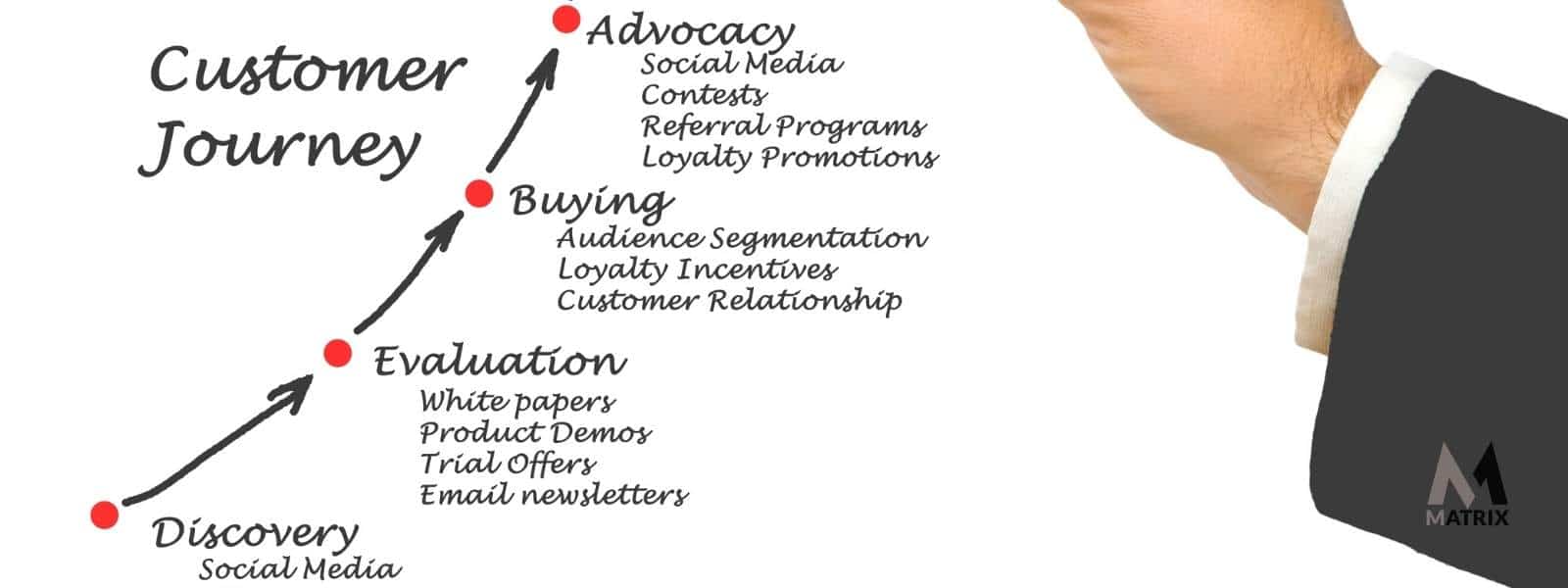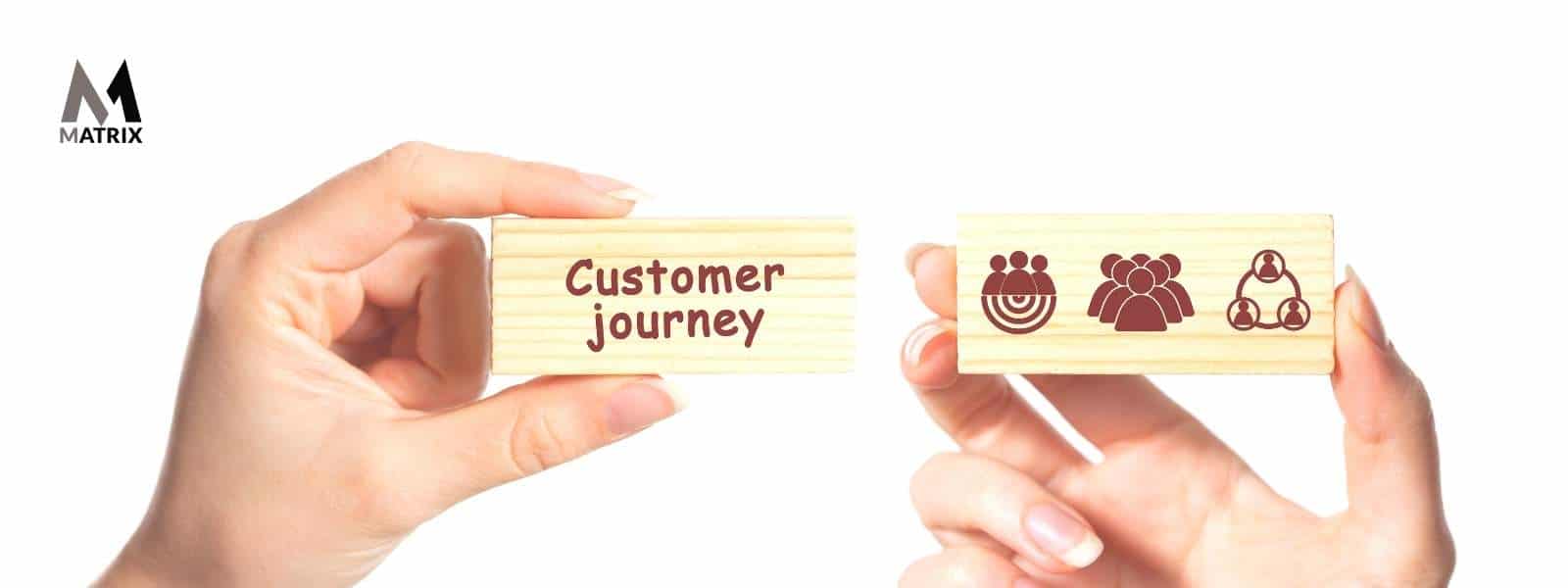Bring Your Consumer Journey From Awareness to Loyalty
The consumer journey and behavior are changing, and marketers must keep up.
That’s why it’s important to understand the consumer journey maps now more than ever – so that you can optimize the consumer experience through a new marketing approach.
Here are six things you should know about understanding the journey to succeed in 2022.
It’s hard to keep up with the ever-changing consumer behavior.
Consumer behavior changes faster than ever, and marketers struggle to keep up. This leaves a lot of money on the table.
Consumers are moving outside the marketing funnel by changing how they research and buy products. Here’s how marketers should respond to the new journey and its moving to an omnichannel environment.

Better Search Ranking
Better Search Ranking in 90 days
SEO is extremely important for companies to rank well in search engines because it is the primary way that people find information online.
What is the consumer journey?
The consumer journey is the process consumers go through when buying a product. It includes everything from researching products to buying them to using them and, finally, recommending them to others.
The journey has changed dramatically in recent years, thanks to the internet and the rise of social media.
What is the digital customer journey?

The digital customer journey is what consumers go through when buying a product online. It includes everything from researching products to buying them to using them and recommending them to others.
The digital customer journey has changed dramatically in recent years, thanks to the internet and the rise of social media.
What is a consumer journey map?
A customer journey map visualizes the different stages a customer goes through when interacting with a brand.
These maps can help marketers understand how customers interact with their brand and what channels they use to research and buy products.
By understanding the consumer path, marketers can create a more effective customer experience that meets the needs of their customers.
How do consumers buy products now?

Consumers now buy products differently than they have in the past. While they still go to traditional retail outlets for products, increasingly, consumers are buying products online through websites and apps.
Consumers also rely heavily on social media as a source of product information.
The three stages of the consumer journey – pre-purchase, purchase, post-purchase
In general, there are three stages to the consumer journey:
- Pre-Purchase: Consumers first decide what kind of product they want. During this stage, consumers gather information from sources such as family and friends for their reference and convenience rather than directly asking for advice about specific products. They may consult online reviews or check out sites like Amazon.com.
- Purchase: This is when a consumer begins the process of actually buying a product, whether it’s online or in person. At this stage, marketers can encourage consumers to make impulse buys by offering coupons and discounts at the point of purchase.
- Post-Purchase: Once consumers have purchased, they often turn to social media for feedback on their choices. They may read what other customers say about products online or ask questions in forums like Reddit or Quora. Consumers may also write reviews themselves to share their experiences with products. Some even create videos showcasing certain products (like this one for an electric kettle).
How do consumers make decisions?

Various factors go into how consumers make decisions about which products to buy. Some of the most important factors include:
Price: Consumers are always looking for the best deal and will often compare prices between different brands and retailers before making a purchase.
Availability: If a product is not readily available, consumers may be less likely to buy it. This is especially true for products that are only available online.
Quality: Consumers want to buy products they can trust, and they will often research products before purchasing to ensure they are getting the best quality.
Brand loyalty: Some consumers are loyal to certain brands and will only buy those brands. Brand loyalty is especially important for some companies. For example, Apple products are often popular with people who don’t want to buy products from other companies.
Why are consumers moving outside the marketing funnel?
The consumer path has changed considerably due to several factors, including the internet and social media.
These factors have made it easier for consumers to gather information online through various channels. This can be good and bad for marketers because they have less control over what consumers learn about their products.
The more content consumers can access, the less they rely on marketing sources like advertising or brand websites that marketers use to promote their brands.
There are things marketers can do to get their message out online and promote strong brands. Marketing efforts will need to target specific audiences to reach consumers effectively.
What does this mean for customer experience?
As the consumer journey stages have changed, so has the customer experience. There are a few ways that marketers can optimize customer experience:
- Make it easy for customers to find information on your company’s products through one site or platform – Avoid sending people from different websites with product information on them elsewhere, where they have less control over what content they see about your products.
- Ensure you have a consistent voice throughout these channels so customers know it is coming from one source rather than several different sources that don’t have anything to do with each other.
- Allow consumers to give feedback on products – This is especially true if your company sells a physical product rather than a service, as customers can provide valuable feedback that you can use at different stages of the consumer journey, particularly before and after purchase.
- Get involved in social media conversations about your brand – Make sure you’re joining in on conversations occasionally where customers are talking about brands they like (whether or not those brands compete with yours).
With more people listening for mentions of certain words and phrases related to your brand, it’s important to stay active on social media so you can respond if needed. Healthcare consumer journeys are extremely important.
Study how consumers make buying decisions – By studying the various factors influencing purchasing decisions, marketers can look for ways to influence those factors in their favor. For example, if the price is a major factor for customers, offering discounts or deals may help increase product sales.
What are some challenges of optimizing customer experience?

When it comes to optimizing the customer experience, marketers must ensure they aren’t getting too caught up in the online world and forgetting about traditional marketing efforts like TV ads or billboards.
These forms of advertising still play an important role because not everyone gets information online, but many consumers also use these channels.
If you’re trying to figure out how your brand will be represented across different platforms targeting different types of people (e.g., Facebook vs. Twitter), consider hiring someone to help you analyze these potential marketing opportunities.

What should a marketer do to get started?
As you optimize customer experience, creating a customer journey map is one good place to start.
This will help marketers see where people interact with their brand online and how they interact with it outside of traditional channels. With this knowledge, marketers can work on different types of content for each channel.
For example, suppose your audience prefers photos over long-form posts on Facebook, while X.com users tend to prefer the opposite. In that case, you might want two completely different types of posts going out on those channels rather than trying to mix them into one type that doesn’t appeal to either group of consumers.
When creating a customer journey map, you can use these factors as a way to organize and prioritize your time:
Many marketers create a buyer’s persona if you’re struggling with how much information should be included in each type of content.
Activate Your Brand For More Sales Today!
This will help them determine what types of things appeal most to the people interacting with their brand online.
For example, if you know that one group is very active on Facebook and Twitter but only checks email now and then, sending as many emails as tweets or posts might not make sense because those consumers won’t see the full content anyway.
Instead, concentrate on making sure those consumers see your posts through social media – this will ensure they receive vital information about your products and company.
Mapping the Consumer Path During the Pandemic
The consumer path to purchase has changed dramatically in the past few years, and the pandemic has only accelerated those changes.
Consumers are now researching and buying products in ways that differ significantly from the marketing funnel. Marketers need to respond to these changes by creating an omnichannel customer experience.
One important way to do this is to map the consumer path. This will help you understand how consumers are researching and buying products, and it will also help you identify gaps in your customer experience.
You can address those gaps by creating a consistent customer experience across all channels. What does the future hold for marketing and the customer journey? Marketers are looking to technology for the answer.
“You have companies that are blooming because of technology,” says Sarah Franklin, President and Chief Marketing Officer at Salesforce.
Technology will drive the future of marketing and the journey, so marketers must embrace it to stay ahead of their competition. In addition, he believes that customer experience is becoming a battleground in which “we’ve got to compete.”
The pandemic has caused a major change in consumers’ research and buying of products. Mapping out this process–the customer journey–allows a company to identify important gaps in its omnichannel customer experience.
This allows you to address those gaps via an omnichannel approach that ensures consistency across all channels. Consumers are utilizing new and emerging technology to find the best deals and customer experience possible, so marketers must embrace technology to stay competitive.
- Personalize marketing strategies according to different consumer needs
- Use tools such as mobile payment options and artificial intelligence
- Optimize website for search engines and provide social media integration
Aligning marketing with the consumer path
Marketers have long been aware of the consumer decision journey, which is the process customers go through when purchasing.
The traditional marketing funnel considers the different stages that a customer goes through, from awareness to purchase to retention. However, in today’s omnichannel world, the consumer decision journey has changed, and marketers must change their approach to align with it.
Nowadays, customers are researching and buying products differently than they used to. They may start by looking for information online, then check out reviews or talk to friends before purchasing.
Companies must have a presence across different channels, not just focus online. To optimize customer experience and effectively reach potential customers, marketers need to keep track of and plan their marketing activities according to this new decision journey.
When we talk about the consumer decision journey, we’re not just talking about a linear process that can be mapped out as it follows a clear path from beginning to end. Rather, consider each stage a web with branches leading off in different directions.
Some people may start by researching online but change their minds and decide to look for real-world information instead; others might buy something immediately without doing any research at all.
The possibilities are endless, meaning marketers shouldn’t feel restricted by how they’ve seen the consumer decision journey play out before – there’s no set way that it has to happen now.
Greater focus on adapting marketing strategies that will meet the needs of consumers researching multiple channels rather than those who research within a single channel.
For example, use mobile payment options and artificial intelligence (AI) to enhance your omnichannel customer experience. Also, ensure your site is optimized for search engine results and provide social media integration via widgets or buttons.
- Effective brand awareness
- Consistent messages across all marketing channels
- An omnichannel approach to customer experience
Branding is crucial in optimizing your customer. Brands should focus on channel consistency via omnichannel branding and marketing strategies.
They need to have effective brand awareness while ensuring consistent messaging across all channels to avoid confusion about the brand.
For example, an online retailer should have a mobile app with similar options and features as its website. This allows consumers to adjust to this new journey by having a familiar experience regardless of their device.
Marketers can ensure their brand is recognized by putting together omnichannel campaigns that utilize offline and online mediums to maintain their visibility.
What does the future hold for marketing and the consumer journey?
The future of marketing and the customer journey is looking very bright. Technology will play a huge role in both of these aspects, and companies that embrace it now will be the ones that come out on top.
Technology is changing how consumers research and buy products, so marketers need to embrace it to keep up with the competition. In the future, we can expect to see even more innovative technologies that will help connect consumers with the products they want.
For example, augmented reality (AR) and virtual reality (VR) are already changing the way consumers interact with brands. With AR, consumers can “try on” different products before they buy them, and VR allows them to experience a product virtually before they purchase it.
The future of marketing and the customer journey is also bright because consumers are doing their research across multiple channels rather than just one channel, so marketers need to have consistent messaging across all channels that complement each other.
Technology will help marketers connect with their customers while providing them with a positive customer experience regardless of device or platform.
Marketers who embrace technology now will stay ahead of the competition in this ever-changing market. And since consumer behavior continues to change, so should the goals, strategies, and tactics marketers use to align themselves with their customer’s needs.
Conclusion
As technology advances, so does the customer journey. Marketers who want to stay ahead of the competition must embrace new technologies to connect with their customers. We explored the modern consumer journey.
In the future, we can expect even more innovative technologies that will help improve customer experience. Additionally, marketers need consistent messaging across all platforms because consumers research multiple channels.
Those who embrace technology now will stay ahead of the curve and align themselves with their customer’s needs.
You’re not sure what the consumer journey is or how consumers buy products now. You need to change your marketing strategy but don’t know where to start.
Now that you understand the customer journey and how consumers buy products, it’s time to create a new marketing strategy to optimize the consumer experience. This guide provides everything you need to get started.
The consumer journey is changing, and so is how consumers buy products. Marketers must adapt their strategies to provide the best customer experience possible. Understanding the customer journey is essential for success in 2024 and beyond.
Keep up with the times by understanding the journey. This will help you optimize the customer experience through a new marketing approach tailored to how consumers buy products today.
Matrix Marketing Group can help with your consumer journey and omnichannel marketing.

Matrix Marketing Group is a company that understands the journey and how to provide an excellent customer experience through omnichannel marketing.
They can help your business connect with consumers through innovative technologies and consistent messaging across all channels. Matrix Marketing Group is passionate about helping businesses succeed, and they have the experience and expertise to make it happen.
General FAQs
What are the stages of the consumer journey?
The consumer journey has three main stages: awareness, consideration, and purchase. However, a few other stages, such as loyalty and advocacy, can occur before or after the purchase stage.
How does the customer experience affect your business?
Providing a good customer experience is essential to the success of your business. The customer experience is important to your business because it affects how customers feel about your brand. If you provide a good customer experience, customers will be more likely to recommend your brand to others and return in the future. However, if you provide a bad customer experience, customers are likely to go elsewhere and may never return.
How can I optimize my customer experience through Omnichannel marketing?
To optimize your customer experience through omnichannel marketing, you must ensure that your messaging is consistent across all platforms. Additionally, using innovative technologies to connect with your customers is important. By embracing new technologies, you will improve the customer experience and stay ahead of the competition.
What is Matrix Marketing Group’s opinion on omnichannel Marketing?
Matrix Marketing Group’s opinion on Omnichannel Marketing is that embracing new technologies, such as analytics and data, to inform your risk-averse strategy will help you stay ahead of the curve and improve customer experience. Matrix Marketing Group provides innovative solutions for clients across the Americas by combining traditional marketing with cutting-edge marketing automation management. Our expert guidance can help maximize contributions via real-time performance analysis, targeted audience lead generation, nurturing, and accountable results.

